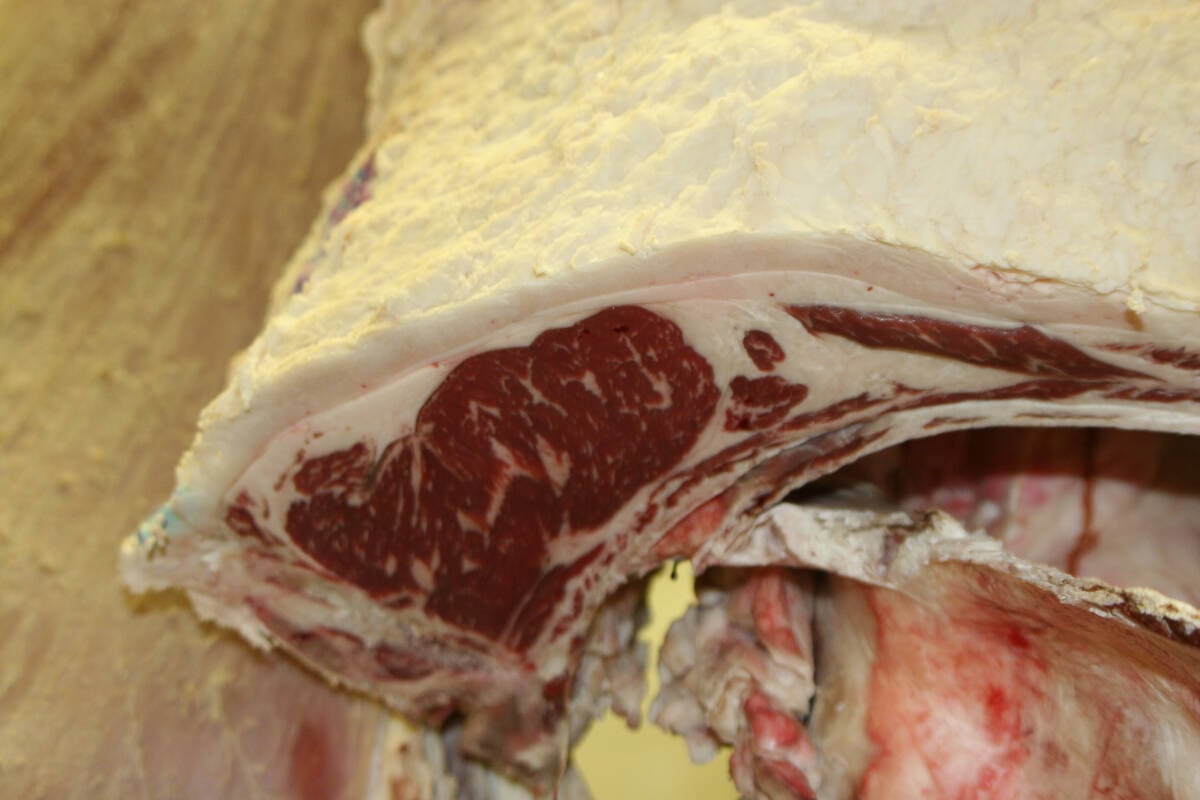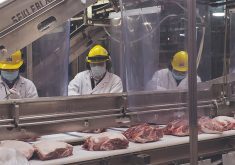MOOSE JAW, Sask. — The cattle producers behind an abattoir in southeastern Saskatchewan say they’re happy to share their plans with others who want to take on the same challenge.
They say smaller abattoirs are at risk due to cost-prohibitive regulations, and communities may want to be proactive to keep facilities and jobs.
Justin Marcotte, a director of the South East Butcher Block Co-operative, said it took a lot more time and money than expected when a co-operative formed to take over and expand Davis Meats in Alameda. They knew the owner, Murray Carnduff, faced a list of building upgrades that he didn’t want to do so close to retirement.
Read Also

Feds propose overhaul of chronic wasting disease control program
Chronic Wasting disease control program getting updated by Canadian Food Inspection Agency with feedback encouraged from producers.
Yet local abattoirs face long waiting lists, and the producers didn’t want to see theirs close.
A group formed the co-op in 2021, broke ground in 2023 and finally opened in August 2024.
Marcotte told the Saskatchewan Stock Growers Association convention about 230 shareholders have contributed $1.2 million to the project.
In retrospect, the $1,000 minimum buy-in was too low, he said, and it probably should have been $5,000. A plan to offer consumer shares at $500 each exists but hasn’t been pushed, he added.
The project was eligible for a $500,000 rebate through the Saskatchewan Lean Improvements in Manufacturing program, but only after some lobbying. Marcotte said the rebate is for equipment, but much of an abattoir is cement. For example, coolers are part of the building and not stand-alone pieces.
The new building, on the same site as the former Davis Meats, was built to provincially inspected standards but is currently only health inspected.
Carnduff is managing the operation, but still intends to retire soon, and it employs nine full-time and eight part-time students and a part-time bookkeeper. Marcotte said 80 per cent of the staff are women, and half are younger than 19.
Two students have taken the butchery course at Olds College, which he said is a win because it brings skilled labour back to the community.
“We’re supplying lots of rinks, golf courses, baseball diamonds, as well as our retail front,” he said.
“Then we’re wholesaling to some of the Co-ops, some of the C-stores.”
Product is also available at Regina’s Rosemont Hardware, which is known for carrying and promoting local value-added products of all types.
The plan was to process 20 animals per week, but about a dozen are going through now. They will slaughter any type of animal but not fowl.
Marcotte said the business has a hot cooler so it can do custom slaughter. The facility features an outdoor knock box to keep the animals as calm as possible. After it is knocked, the overhead door lifts and both the chute side and floor move hydraulically to roll the animal into the building for slaughter.
He said it’s tricky to operate the slaughter and retail sides of the business.
“We really could use a retail manager to help focus on that, but payroll is what we’re watching right now,” Marcotte said.
“We are currently making some pretty heavy mortgage payments and once we get rid of those, we’ll start paying dividends to our shareholders.”
The board is looking at establishing a second cut line, and future opportunities include pet food and using waste for biogas. But for now they are focusing on keeping the business going and finding a replacement for Carnduff.
Marcotte said their research found the province had 79 health-inspected abattoirs, and only 16 had more than five employees. Sixty-one of them had sales of less than $3 million.
Many of the licences were grandfathered, he said.
Succession may be “scary” over the next five to 20 years, he said.
Marcotte said the province has to ask what it wants medium-sized slaughter capacity to be. Will the next generation want to be business owners and will they have the capacity and capability?
Communities are going to have to be creative to keep theses businesses going, he added.
Asked if the South East plan is replicable, he said it is easily done but will cost more than many would think because of the inspections and engineering. A plan to add a bathroom caused a three-week delay, and eventually they scrapped it in favour of progress on the building.
“We built it to be provincially inspected just in case the health-inspected guidelines change down the road or we decide that that’s where we want to get to. Right now, there’s no benefit to us to be provincially inspected,” he said.
He also said it’s unlikely an existing building could ever be renovated to be provincially inspected because it would just be too expensive.
Canadian Cattle Association director Lynn Grant suggested the province could create a franchise model for abattoirs so others don’t have to go through the same learning process.
“A community that wants to be prepared to raise the money should be just able to go,” he said.
Marcotte agreed.
“I don’t think any of us realize how close to losing abattoirs we are in Saskatchewan, and that is just the regulatory approval,” he said.
















